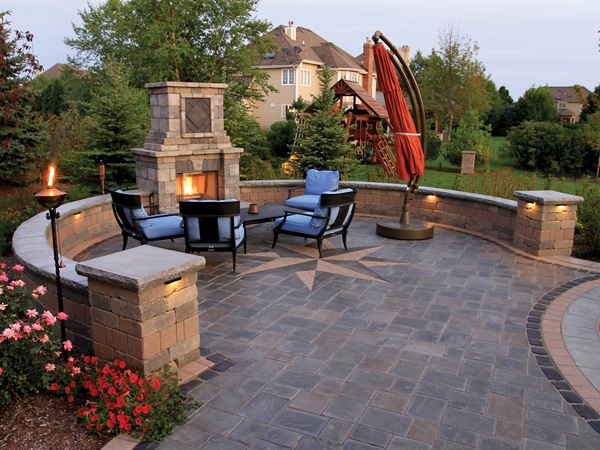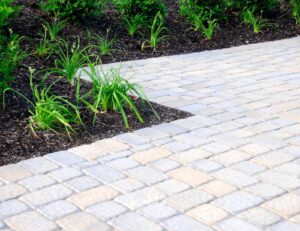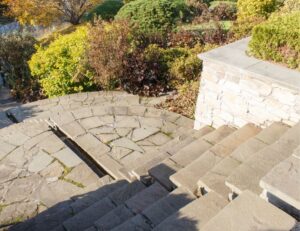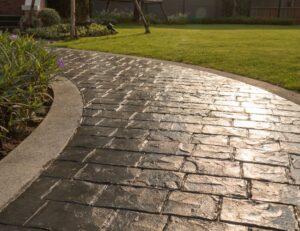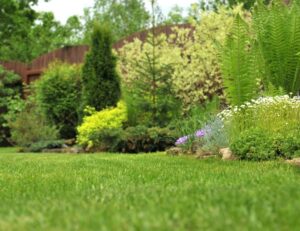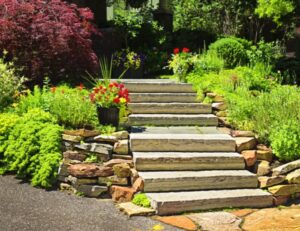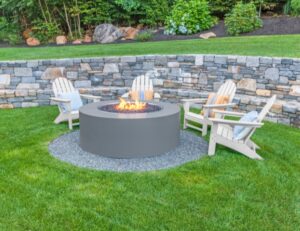Pavers are a great way to add curb appeal and accessorize your outdoor space. Whether you are adding a patio or walkway, pavers offer an elegant design that can seamlessly blend with your other landscaping projects. But if you don’t seal your paver patio, it will wear down quickly and lose its appeal over time. A paver patio should be sealed every 2-3 years depending on the climate where it is located. Here’s what you need to know about sealing your paver patio.
Sealing a paver patio is necessary for the upkeep
If you live in a humid, moist climate, or if you’re near a body of water (be it the ocean or just a puddle), then chances are good that your pavers will need to be resealed more often than those used in drier climates.
Paver sealing is necessary to protect the pavers from stains and water damage. It also helps prevent them from cracking or chipping. In addition, it prevents weeds from growing between the pavers and keeps your patio looking clean and new.
What does sealing do?
Sealing your patio is the best way to protect it against wear and tear, as well as stains and discoloration that can occur over time. Sealing also prevents cracking, chipping and flaking due to weathering. When you seal your paver patio, it will look brand new for many years to come!
There are types of sealers available to protect your paver patio
When it comes to sealers, there are three different types: acrylic, urethane and polyurethane. Acrylic is the least expensive and is designed for porous surfaces such as concrete or asphalt. Urethane is more expensive but provides better protection against chemicals and stains, like oil stains from cars or pools. Polyurethanes are the most expensive type of sealer and provide the longest lasting protection for pavers.
They also come in different colors—some that match your pavers exactly so you don’t even notice them at all (these tend to be pricey), while others can add a pop of color to your project without making any drastic changes (which are typically less expensive).
The life span of each type depends on how well they’re applied; these products generally last up to five years when applied correctly by a professional installer
How to seal a paver patio
How to seal a paver patio:
- Apply sealer with a sprayer. The most effective way to apply sealer is with a sprayer. You can use a garden variety sprayer from your local hardware store, or go for something more robust and industrial like those used in painting or staining projects. Either will work just fine for this task. Simply fill the tank with water, add the desired amount of sealant, then pressurize it by adding some air through the pump on top (or turn it over if you have an airless type). Once all that’s done, pull out your wand attachment and go over your pavers until they’re completely covered in sealant!
- Apply sealer with a roller. If using a roller seems too low-tech for you, consider using one of these handy little machines instead—they’ve been around since the mid-’80s but are enjoying renewed popularity among homeowners looking for ways to save time when applying products like paint and stain throughout their home’s interior and exterior surfaces (including concrete). A paint applicator machine attaches directly onto any standard extension pole so there’s no need for clunky equipment hoses getting tangled up while trying various angles; simply roll along each side of each paver until evenly covered without worrying about drips or messes getting everywhere!
- Apply sealer with a brush: If DIY isn’t really your thing but still want accessibly priced options available when doing repairs around home such as sealing pavers then consider renting tools from local hardware stores instead of buying them outright because renting tools won’t cost nearly as much money per month as buying new ones would cost every year plus gives people who aren’t interested in having expensive toys lying around unused most of time anyway – just imagine how much less clutter would be left over after college graduation party gifts were gone!
When should you reseal a paver patio?
When you seal a paver patio, it’s important to understand that the coating should be reapplied every 2-3 years. This is because sealing protects your paver patio from weathering and stains. Sealing also protects against mold and mildew. When the sealer wears away, these elements can attack your pavers, making them look older than they are and leading to ugly staining, grime buildup and discoloration of other parts of your patio surface.
The best time to seal is just before spring (if possible) so that the new coat will have a chance to set before summertime heat has an effect on it.
Sealer will protect your paver patio if it is applied and maintained properly.
Sealing a paver patio will protect it from dirt, grime, and stains. It’s important to seal your patio because even if you keep it clean, dirt can still find its way into the cracks of your pavers and discolor them over time. Sealing protects your pavers from these kinds of staining as well as preventing any damage that could occur while walking on or near them.
The best part about sealing is that you don’t have to worry about maintaining this protection throughout the year! If done right and maintained properly with minimal traffic on top of it daily (like during cold months), then regular upkeep should be enough to maintain its strength while keeping dirt out at bay so that you don’t have to worry about replacing anything anytime soon!
With the right sealer, you should be able to get a lot of use out of your paver patio. It’s important to choose the correct type of sealer for your patio and follow all instructions carefully. You should also make sure that you reseal the patio every few years to maintain its appearance and protect it from weather damage. With proper maintenance, your paver patio will last for many years before needing any repairs at all!

